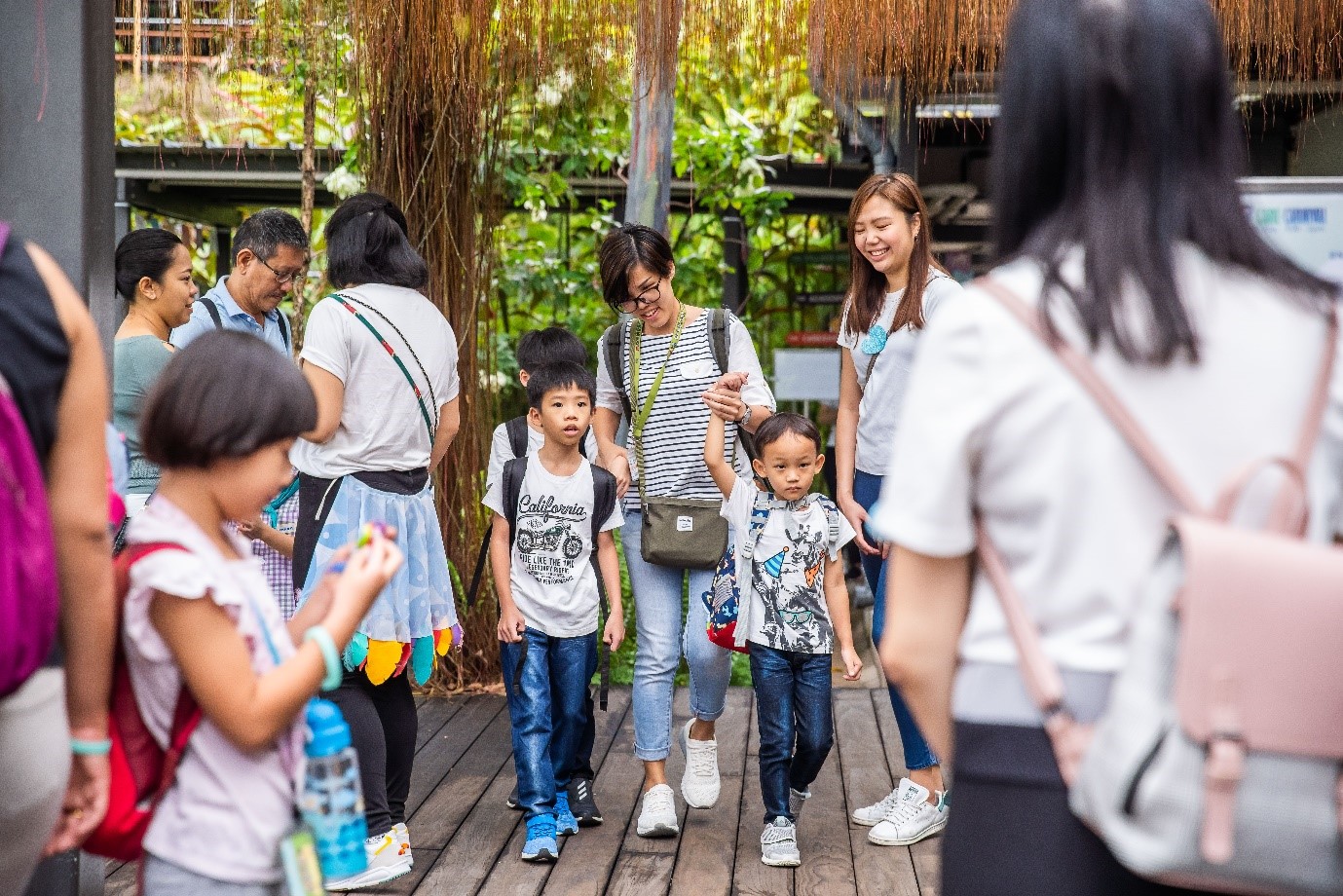
Raising one child with special needs is challenging enough. Raising three puts unimaginable stress and strain on the family. Yet, this is Annette Chua’s reality. Annette’s six-year-old son is suspected to have autism. She is also caring for her nephews who both have autism. The older boy who is 11 is also being treated for depression and anxiety while his nine-year-old brother is being tested for learning disabilities.
“Our situation is quite challenging. I don’t just have to manage the boys, I have to manage their parents as well who have mental health issues and are going through a divorce. Because I don’t have legal guardianship of my nephews, I continually have to go through their parents and they are often not co-operative,” shared Annette.
“My husband is also not supportive of the situation and I am largely left on my own to care for our son and my nephews.”
Annette has to depend on her parents for financial help because her brother and sister-in-law do not chip in and her husband is mired in debt. Yet, her plight is not unique. Many caregivers of those with disabilities face their trying circumstances alone, uninformed and unsupported.
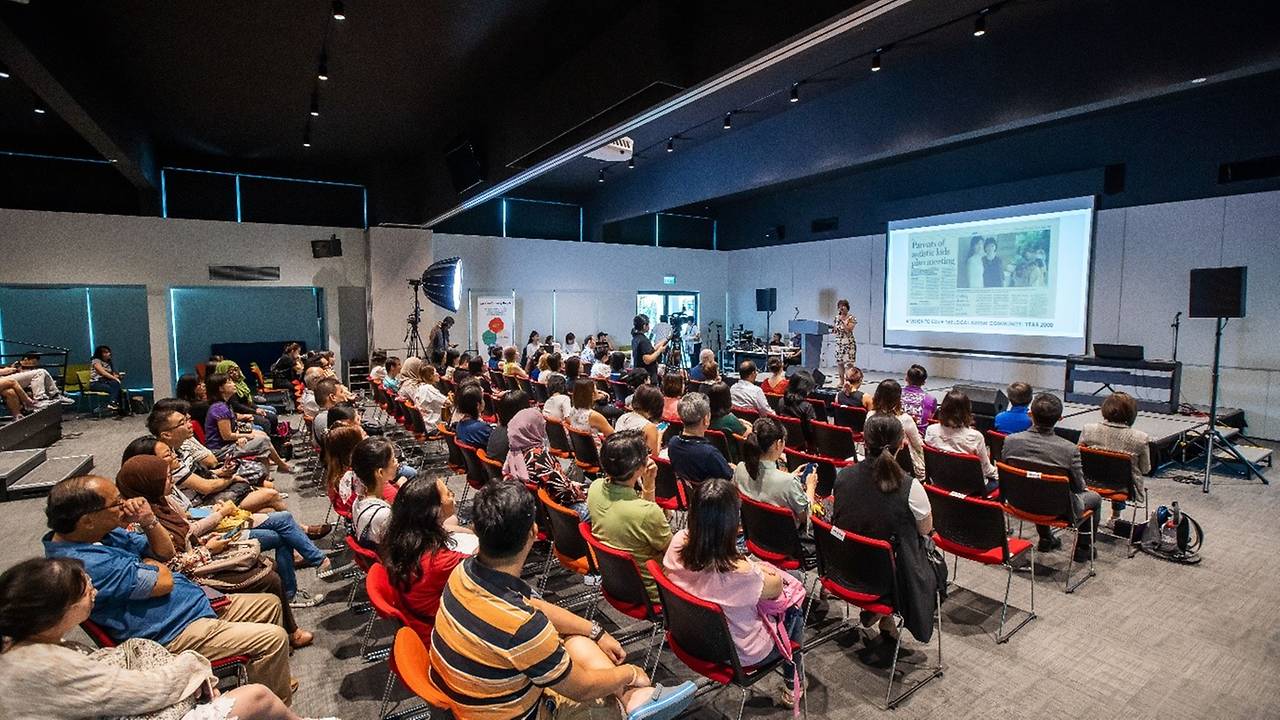
Few understand the needs of such caregivers quite like fellow caregivers. That is why some of them decided to come together in November 2019 to organise Care Carnival. The one-day event aimed to connect, enable and empower caregivers of children and youths with special needs. Together they shared knowledge and practices, and built partnerships with the community, professional bodies and stakeholders.
“I enjoyed myself because at Care Carnival there were child-minding volunteers who helped me care for the boys so I could attend the talks and discussions,” said Annette.
“It was also good to be in a place where people didn’t stare at my boys when they acted up. I came away with lots of takeaways as well such as online resources to help the boys and organisations which provide activities that support caregivers.”
This focus on empowering caregivers is exactly what Mediacorp Enable Fund (MEF) believes in as well. That is why MEF supported the event as a major sponsor to create a more inclusive society.
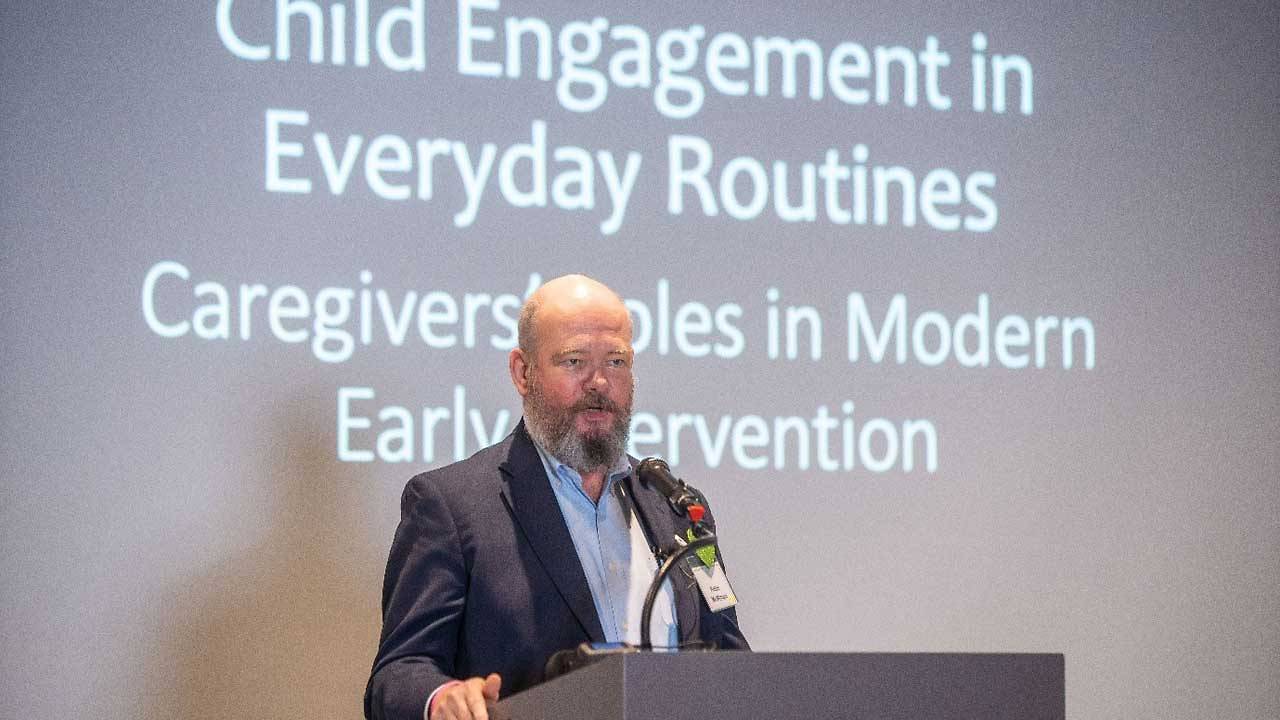
Nearly 500 caregivers, their children, volunteers, partners, service providers and performers came together that Saturday for Care Carnival. Attendees got to listen to event speaker Professor Robin McWilliam. A special education professor at The University of Alabama, and the Founder and Director of the Evidence-based International Early Intervention Office (EIEIO), Professor McWilliam is an expert in early intervention. He developed the Routines-Based Model (RBM) of Early Intervention (Birth-6).
RBM is a collection of practices that helps those with young children with disabilities to cope by enabling the children to function optimally in their daily routines at home and in school. Instead of letting professionals teach the children during isolated sessions, RBM teaches families to manage their children’s learning needs throughout their day-to-day activities.
At the talk, Professor McWilliam discussed strategies to optimise learning opportunities for special needs children and engage them to improve their development and quality of life. Caregivers also learnt parenting activities and teaching methods that have been proven to be successful. In this way, families can decide how best to enable their children.
“It was good to know that children learn best from their natural settings, and that they can be engaged to learn through their daily routines and even pick up general knowledge essential for their independence in the future when they are grown up,” said Annette.
To give caregivers more avenues for help, 20 service providers set up interest-based activity booths to showcase programmes available to special needs children and youths. From performance art, art and craft, and culinary to sports and outdoor, science and technology, and horticulture and agriculture, caregivers saw myriad possible ways their charges could be engaged.
The participants found the carnival educational and informative, one said she was surprised that the scene for special needs had developed so much over the years and that there was that much more now that could be done for special needs children.
Caregivers also received the support they needed. They took part in a focus group discussion with professionals and community stakeholders, and connected with support groups over lunch. A tour of the Enabling Village gave them insights into community resources available to them as well.
The inaugural event was certainly an important step towards building a vibrant and dynamic caregiving community. Many enjoyed it so much that they asked for more of such events. With initiatives like these, caregivers need never journey alone and unaided.
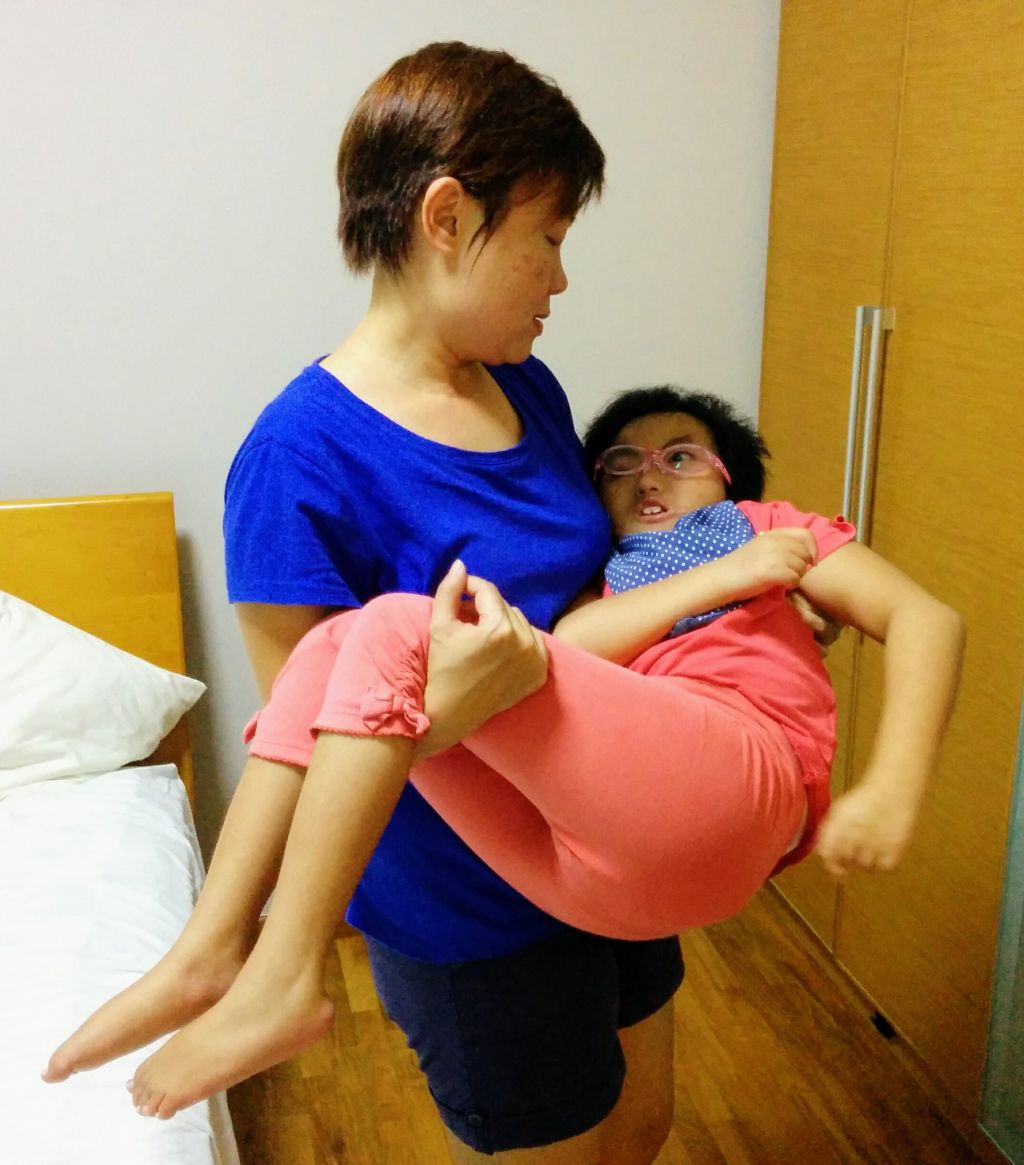
SINGAPORE — Eight years ago, I gave birth to my first child and my life changed forever.
Vera was delivered at full term via elective Caesarean-section at KK Hospital. During the pregnancy, doctors had detected poor growth and abnormalities in her brain, so she was whisked straight to the Neonatal Intensive Care Unit (NICU).
I remember being back at the maternity ward. Around me were mothers next to their newborns in cribs. I had no baby to nurse.
A week later while still in NICU, Vera was diagnosed with Trisomy 18. It is a genetic disorder where the 18th chromosome has three copies instead of the normal pair.
Trisomy 18 children typically have severe intellectual delay, hearing and vision impairment and a slew of physical abnormalities in their vital organs. Most live for a few months, and few survive beyond a year.
There is no history of such a condition in either of our families. It was simply the luck of the draw.
We brought Vera home assuming she would live at most a year.
I did not cope well with the grief, and went through post-partum depression. Thankfully, my sister-in-law helped out. We took turns to feed Vera formula milk every three hours, via a tube place down her throat to her stomach.
The first six months were exhausting. Vera had acid reflux and would throw up regularly. To manage her reflux, we had to feed every two hours, and prop her up for up to 45 minutes after a feed. It was an endless cycle of carrying her and clearing vomitus.
After my maternity leave was up, I returned to work. I did not have the right frame of mind or desire to care for my own baby.
My husband took over the job of looking after Vera. He went on to take nine months’ no pay leave from his job as a senior engineer at a US automotive firm. Fortunately, he had an understanding boss who allowed him to keep his job until he could return.
With time, the grief eased. “There will be time to cry when she’s gone,” my husband reasoned. “We should try to enjoy whatever time we have with her.” It woke me up.
We started to enjoy each moment with Vera as if it were our last with her. She basked in the love. Against the odds, she began to thrive. When she reached her first birthday, it became clear that she was not going anywhere anytime soon.
When my husband had to return to work, I reluctantly left my job as a senior copywriter at a multinational advertising agency.
I lasted barely three months at home. The stress of dealing with Vera’s constant vomiting, round-the-clock tube-feeding, and colicky irritability was too much for me, a new mum. We clearly needed help with Vera’s daily care.
When I became pregnant when Vera was two, we decided to hire a foreign domestic helper. As those with nursing training cost much more, we got one without experience, and trained her ourselves. We were lucky to find Auntie Beth, a 28-year-old Filipino willing to look after Vera.
It took three months to build up her competency — learning how to handle the night-time feedings, the vomiting, properly wearing her breathing mask.
Life became less stressful. I felt I could breathe again. Because I had a caregiver I could count on, it became possible for me to work again.
I was fortunate to find a company where the boss was understanding of my situation. He offered me a permanent part-time arrangement.
I worked four days a week, and could switch around the days if Vera had medical appointments. I had pro-rated childcare leave as well. I could take no pay leave — to train a new caregiver, or when Vera was hospitalised. With this flexibility, I was able to stay gainfully employed, save for my own retirement and afford the medical and therapy equipment a high-support special needs child requires.
There are many families who cannot afford a live-in helper. Mothers become the primary caregiver. At home most of the time, they can become as isolated as their child. Those who are single mothers or have many more children are under immeasurable strain.
For those of us who can afford it, we are heavily dependent on a helper. Vera is now 20kg and growing. Without muscle strength, she is dead weight. Lifting her from bed to bath, from floor to wheelchair — we feel the strain on our backs as we grow older.
We have been lucky. Vera’s second and current caregiver, 29-year-old Auntie Abe, is a natural. It is not easy to find someone with the right attitude to care for a child who cannot speak or understand a word you say.
Earlier this year, shortly after she turned eight, Vera had a severe lung infection. We nearly lost her. She pulled back from the brink, but some brain damage has occurred. The milestones that she had achieved since birth — sitting by herself, laughing, clapping her hands, hugging us with an iron lock — are gone.
I grieved for what Vera had lost. But this determined little girl is not giving up, so neither can I. She’s hugging us still — with her one good arm.
What is the worth of such children — the weakest members of our society?
Here’s a poem Vera inspired me to write:
Without weakness,
how do we find strength?
Without darkness
how do we see the light?
Without sorrow
how do we savour joy?
Without silence,
how do we learn to listen?
Without fear,
how do we learn to be brave?
Without death,
how do we treasure life?
Without loss,
how would we know what we have gained?
Children like Vera are here to gift us with precious life lessons. She has certainly deepened my perception of life.
Tham Yin May blogs about her journey with her special child at http://mylittlevera.blogspot.sg.
According to Associate Professor Denise Goh, Head and Senior Consultant at National University Hospital’s Division of Paediatric Genetics & Metabolism, the prevalence of Trisomy 18 in Singapore is “not expected to be different from that reported in other countries”.
“The prevalence at conception is estimated to be ~1 in 2500 conception. The prevalence at birth is much lower because many miscarry spontaneously in the first trimester or second trimester; even for those that make it to third trimester, some die in utero before birth. For those that are picked up by prenatal screening, some parents choose to keep them while others do not,” said Assoc Prof Goh.
“Only a handful” in Singapore are currently diagnosed with the condition.
Figures from the Ministry of Healthshow that from 2011 to 2015, an average of two babies were born with Trisomy 18 per year here.
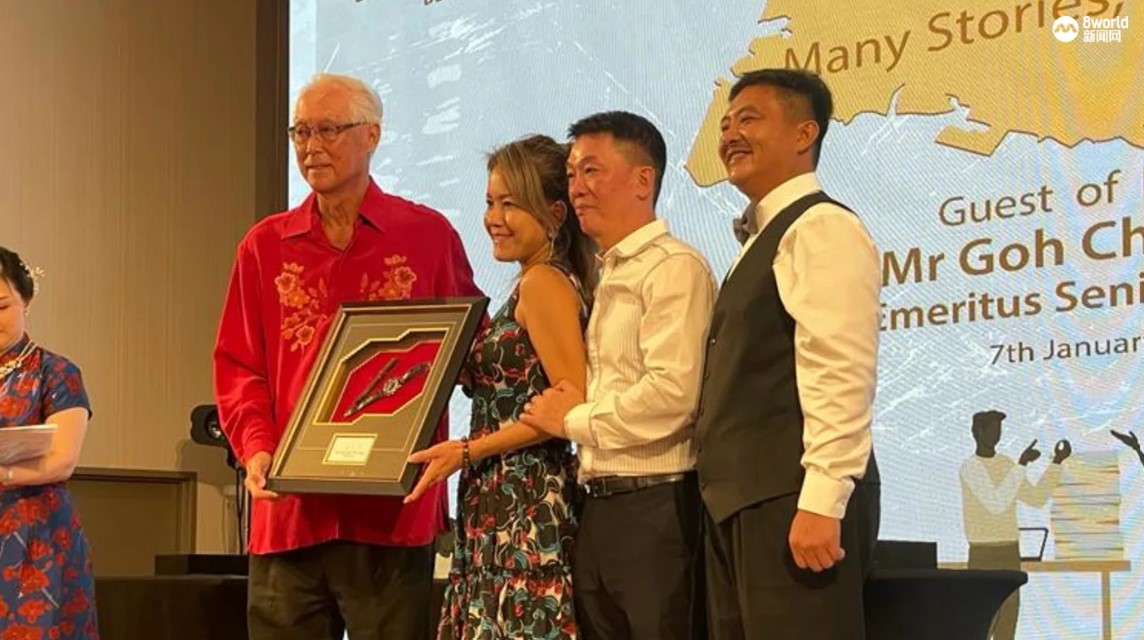
庆祝生日不忘做慈善!潮安会馆候任主席张学彬昨天(7日)庆祝46岁生日,特地举办一场盛大生日晚宴,为吴作栋协立慈善基金筹款,并邀得荣誉国务资政吴作栋担任主宾,整个晚宴总共为协立慈善基金筹得近250万元善款。 其中,吴作栋也捐出自己的手表和钢笔供竞标,两样物品最终以26万元的高价拍出,得标的是Epl Alliance Pte Ltd公司。 而印有吴作栋、社会及家庭发展部高级政务次长蔡瑞隆、国会议员陈佩玲、林谋泉和阀贺米的掌印纪念品,则拍得33万3333元3角3分的高价,由商人朱志强夫妇标得。 46岁的张学彬,是优联燃气控股的总裁,活跃于多个会馆社团。配合他的生日,他昨晚在醉花林俱乐部礼堂举办这场名为“实现梦想”(Enabling Dreams)的慈善晚宴。出席者除上述多个政要议员外、还包括企业家、商界领袖等“重量级”人物。 协立慈善基金至今发放逾500万元助残障人士 张学彬接受《8视界新闻网》访问时说,昨晚的晚宴对他来说,意义非凡。他说,其实庆生是次要,更重要的是想要做一场慈善筹款活动。 “我觉得,社会上还有一些不幸群体,需要我们去帮助。生日年年有,但不是说,年年都可以去办慈善活动。很幸运的,大家都很疼爱我,一叫就来了。” 张学彬说,昨晚筹到的所有善款,都将捐给吴作栋协立慈善基金,希望尽可能帮助到更多的有需要群体。 吴作栋在致辞时说,吴作栋协立慈善基金至今已发放超过500万元协助残障人士,他希望该基金是可持续性的,以便能继续为残障人士得生活带来积极得影响。 昨晚的庆生慈善活动,共进行长达四个小时,分别举行多场的慈善义标项目,在场的仁人善翁、商界人士都非常踊跃参与捐款,整个慈善晚宴最终共筹得243万8888元。 吴作栋协立慈善基金受惠者,昨晚在晚宴上也带来多项余兴节目,使得晚宴热闹精彩。 吴作栋协立慈善基金旨在为残障人士提供对社会做出贡献和融入社会的机会。基金由新协立管理,新传媒鼎力支持。荣誉国务资政吴作栋是基金的赞助人。欲通过吴作栋协立慈善基金给予残障人士支持, 请浏览 GCTEnableFund.sg。 文: 8 world 叶衍娴
Read More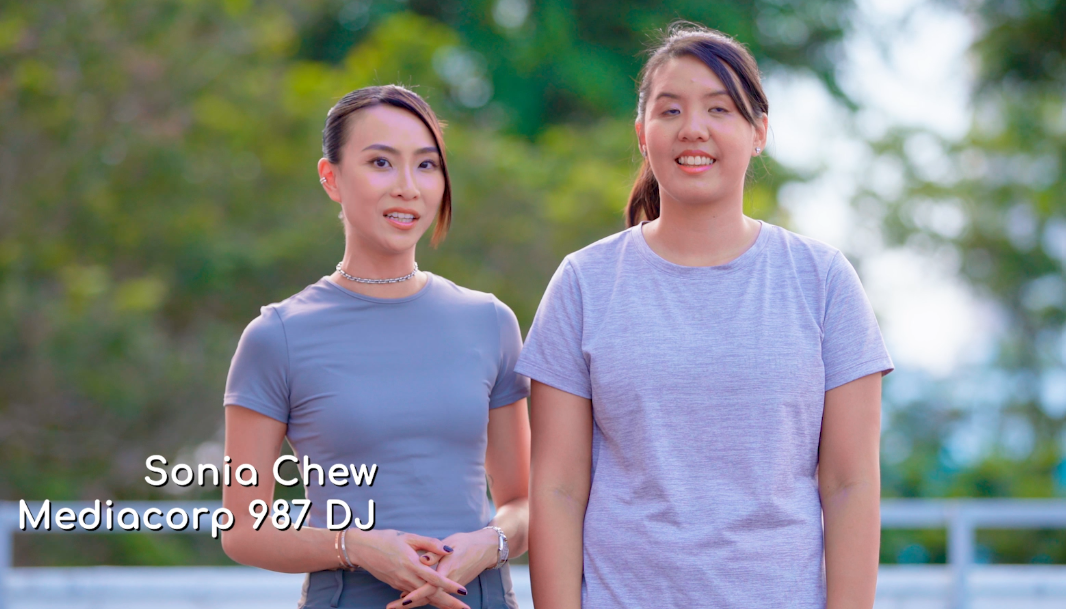
987 DJ Sonia Chew spent a day getting to know Joan Hung, a Goh Chok Tong Enable Awards 2021 Promise Awardee. Joan was born with visual impairment, but that has not stopped her from pursuing her passion for sports. She has represented Singapore in Goalball in the ASEAN Para Games in 2015 and 2022, […]
Read More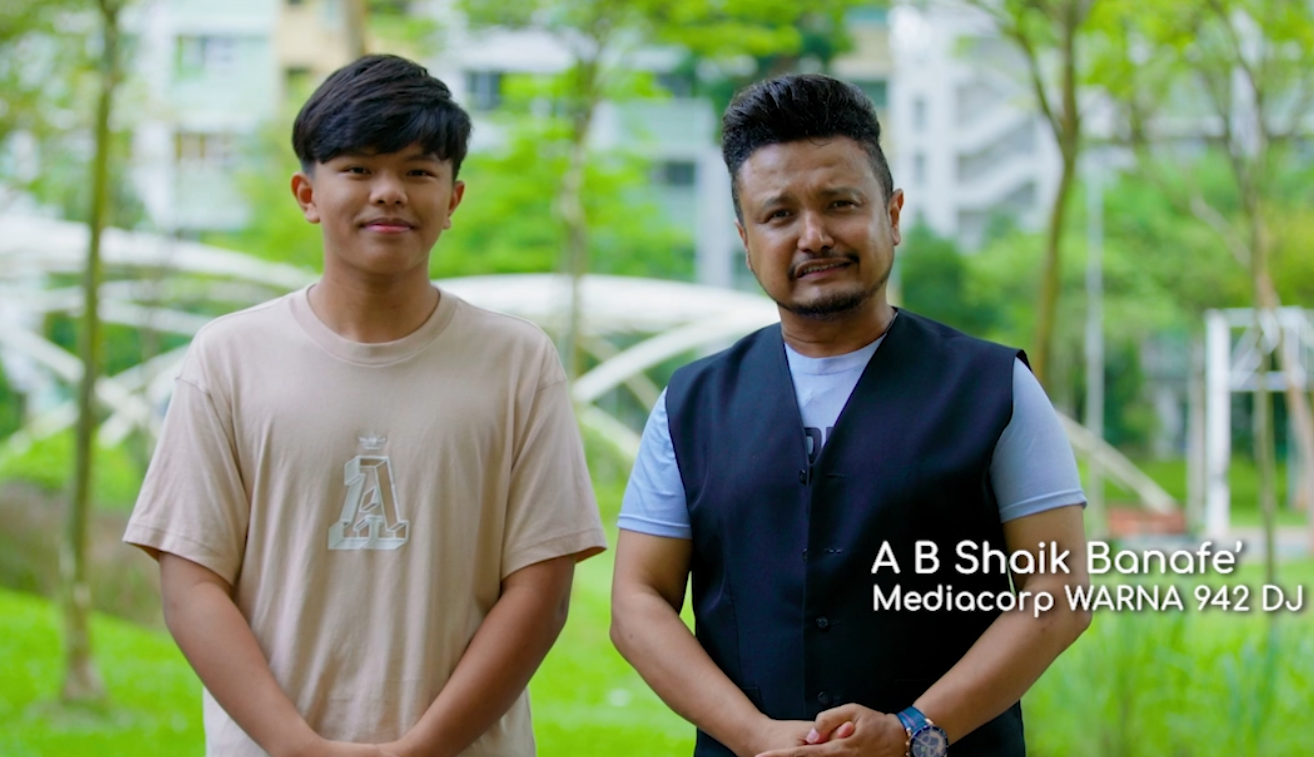
WARNA 942 DJ A B Shaik spent a day getting acquainted with Amirul Afiq, a beneficiary of the Goh Chok Tong Enable Fund. Amirul was born deaf, but he has never allowed his disability to deter him from living life to the fullest. The Fund aided Amirul in purchasing a cochlear implant, which allowed […]
Read More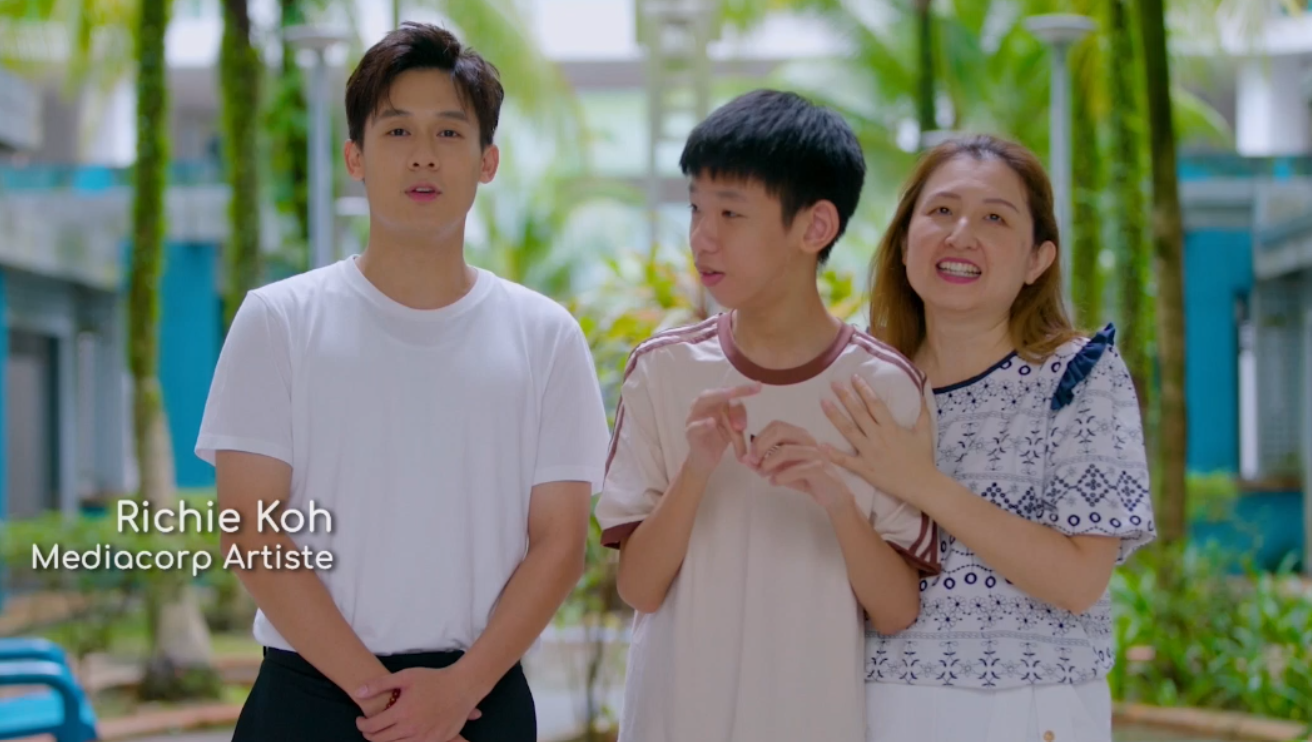
Richie Koh and Goh Chok Tong Enable Fund beneficiary Fengze spent the day together and bonded over their love for all things superheroes. Diagnosed with autism and Pierre Robin Syndrome, which causes breathing difficulties, Fengze is unable to communicate verbally and requires constant care and supervision from his parents to ensure his safety. You […]
Read More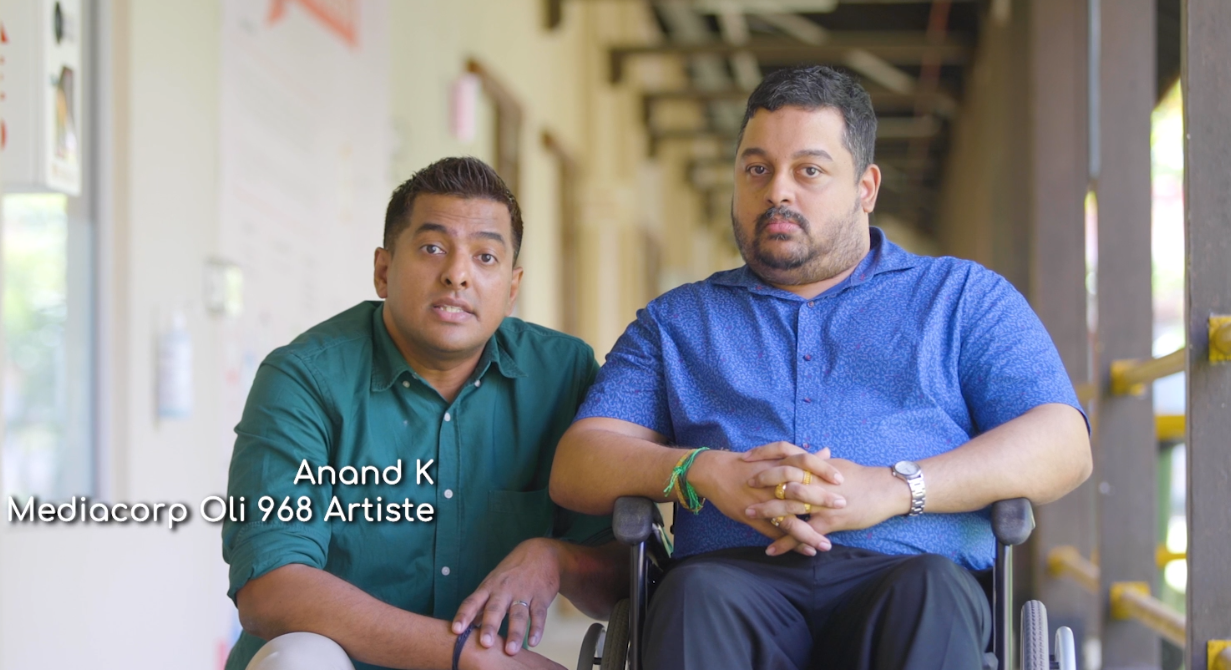
Oli 968 artiste Anand K spent a day with Dr Navin Nair, Goh Chok Tong Enable Awards 2022 Promise Awardee, who was diagnosed with cerebral palsy at birth. He became a force for good, working with the Land Transport Authority and SMRT in their efforts to support persons with disabilities in navigating the public […]
Read More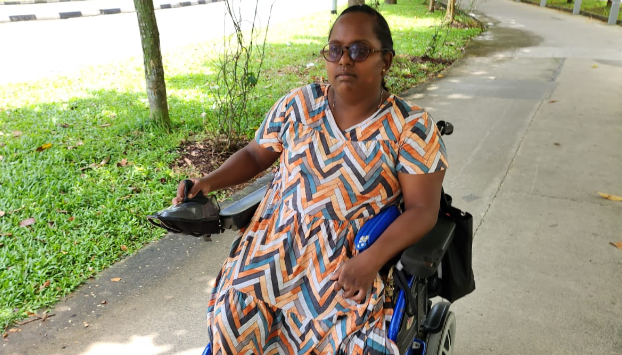
Weekends are always busy for 41-year-old Executive Assistant, Mary Sagaya; like most, she spends quality time with her family either visiting various parks or going shopping. It has been six years since Mary purchased her motorised wheelchair with aid from the Goh Chok Tong Enable Fund (GCTEF), which Mary shared, has allowed her to once […]
Read More